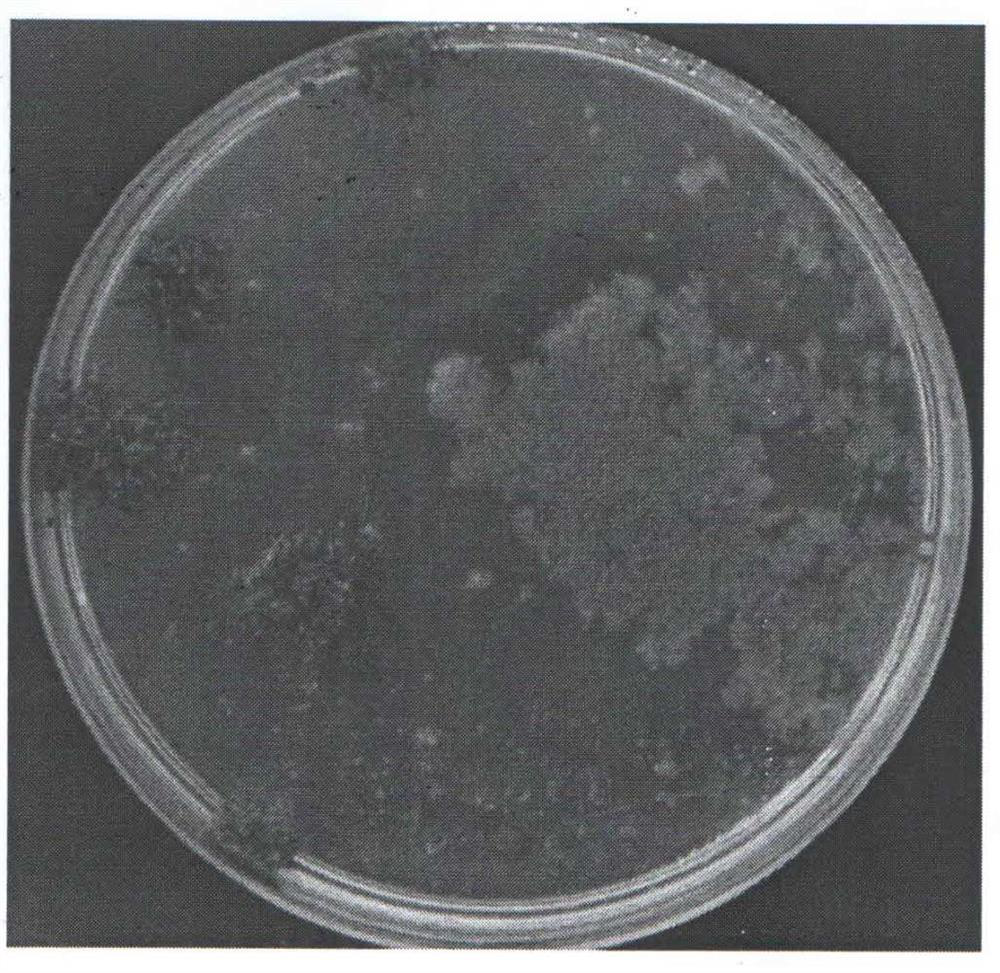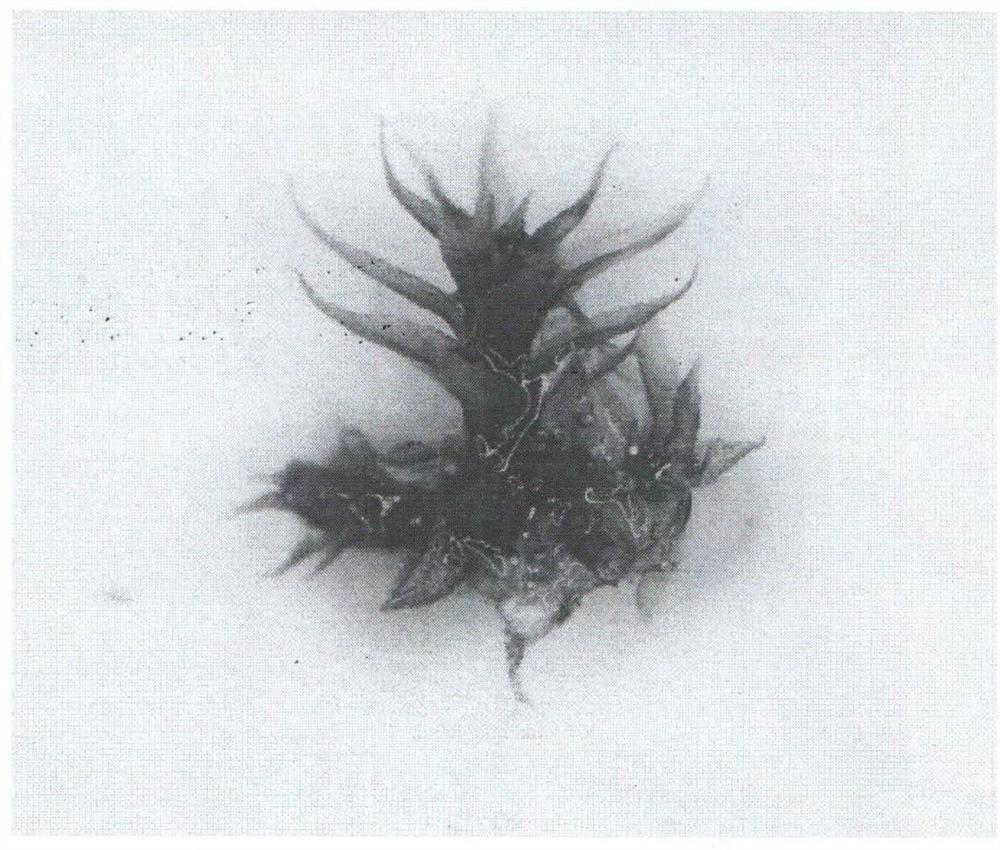Agrobacterium tumefaciens-mediated moss stable genetic transformation method
A genetic transformation method, Agrobacterium-mediated technology, applied in the field of plant transgenics, can solve problems such as cases of no successful transformation
- Summary
- Abstract
- Description
- Claims
- Application Information
AI Technical Summary
Problems solved by technology
Method used
Image
Examples
Embodiment 1
[0047] The method for the genetic transformation of Physcomitrella patens, concrete operation is carried out according to the following steps:
[0048] Physcomitrella patens protonema culture:
[0049] a. Cultivate the protonema of Physcomitrella patens in the laboratory, adopt the grinding method, put the protonema of Physcomitrella patens into a sterilized 50 ml centrifuge tube, add 20 ml of sterile water, and grind for 1 minute with a grinder , grind into a homogenate, absorb 2ml of Physcomitrella patens protonema homogenate and add it to the conventional PPNH4 solid medium. The medium is evenly covered with sterile cellophane, sealed with a 3M gas-permeable membrane, and grown for 6 days as a transformation material. .
[0050] Agrobacterium cultivation:
[0051] b. Put the single colony of Agrobacterium containing the target gene into the Agrobacterium culture solution, and culture it with shaking at 28°C and 200rpm. When the OD value of the Agrobacterium solution is 0....
Embodiment 2
[0061] The method for the genetic transformation of Physcomitrella patens, concrete operation is carried out according to the following steps:
[0062] Culture of Physcomitrella patens gametophytes:
[0063] a. Cultivate Physcomitrella patens gametophytes in the laboratory, adopt grinding method, get Physcomitrella patens gametophytes 0.1g and put into a sterilized 50ml centrifuge tube, add 20ml of improved KNOP liquid medium, grind for 1 minute with a grinder, Grind into a homogenate, draw 2ml of gametophyte homogenate and add it to the conventional modified KNOP solid medium. The medium is evenly covered with sterile cellophane, and grow for 30 days as the transformation material;
[0064] Agrobacterium cultivation:
[0065] b. Put the single colony of Agrobacterium containing the target gene into the Agrobacterium culture solution, and culture it with shaking at 28°C and 200rpm. When the OD value of the Agrobacterium solution is 0.4-0.6, centrifuge at 5500rpm for 10 minute...
Embodiment 3
[0073] The method for the genetic transformation of the silver leaf moss, concrete operation is carried out according to the following steps:
[0074] Cultivation of the protonema of Moss argentifolius:
[0075]a. Cultivate the protonema of the silver leaf moss in the laboratory, adopt the grinding method, take 0.1g of the silver leaf protonema and put it into a sterilized 50ml centrifuge tube, add 20ml of the improved KNOP liquid medium, and grind it with a grinder Grind for 1 minute, grind into a homogenate, draw 2 ml of the homogenate, add it to the PPNH4 medium, seal it with a 3M air-permeable membrane, and cultivate it for 6 days as a transformation material;
[0076] Agrobacterium cultivation:
[0077] b. Put the single colony of Agrobacterium containing the target gene into the Agrobacterium culture solution, and culture it with shaking at 28°C and 200rpm. When the OD value of the Agrobacterium solution is 0.4-0.6, centrifuge at 5500rpm for 10 minutes and collect The ...
PUM
| Property | Measurement | Unit |
|---|---|---|
| conversion efficiency | aaaaa | aaaaa |
Abstract
Description
Claims
Application Information
 Login to View More
Login to View More - R&D
- Intellectual Property
- Life Sciences
- Materials
- Tech Scout
- Unparalleled Data Quality
- Higher Quality Content
- 60% Fewer Hallucinations
Browse by: Latest US Patents, China's latest patents, Technical Efficacy Thesaurus, Application Domain, Technology Topic, Popular Technical Reports.
© 2025 PatSnap. All rights reserved.Legal|Privacy policy|Modern Slavery Act Transparency Statement|Sitemap|About US| Contact US: help@patsnap.com



